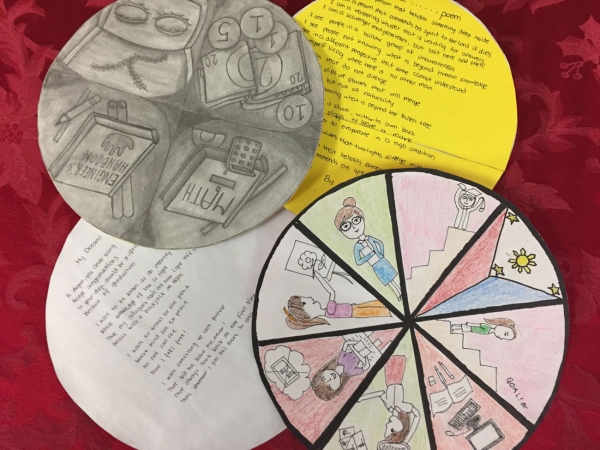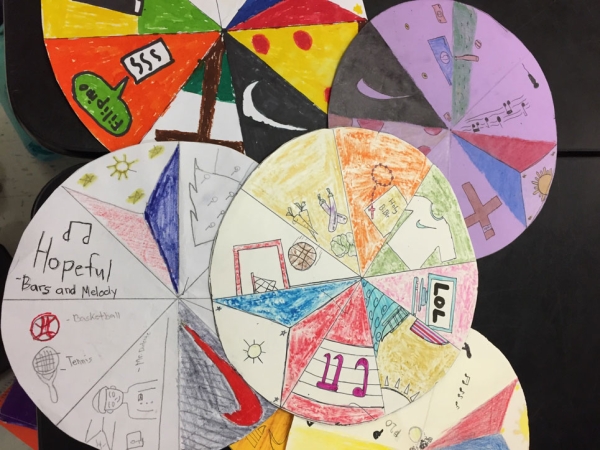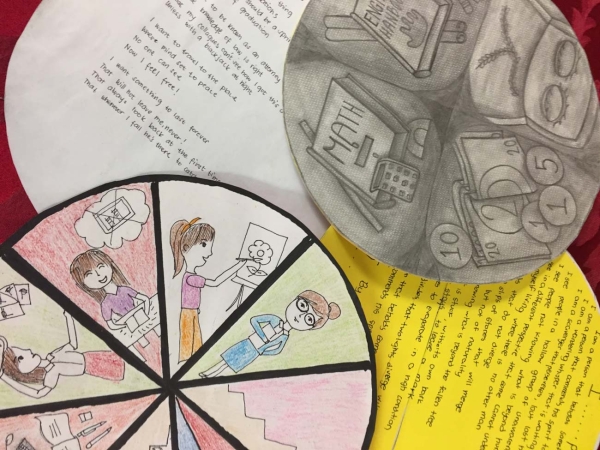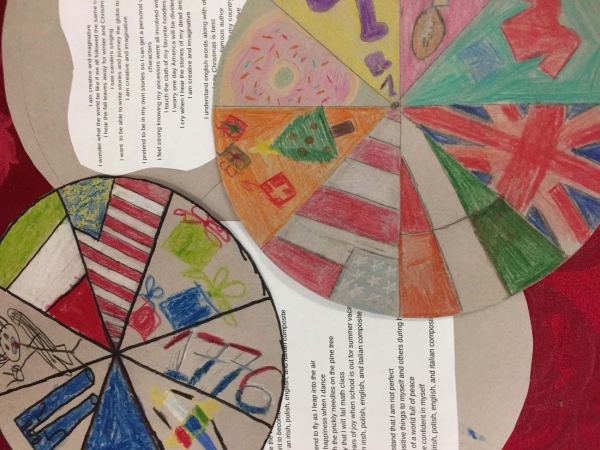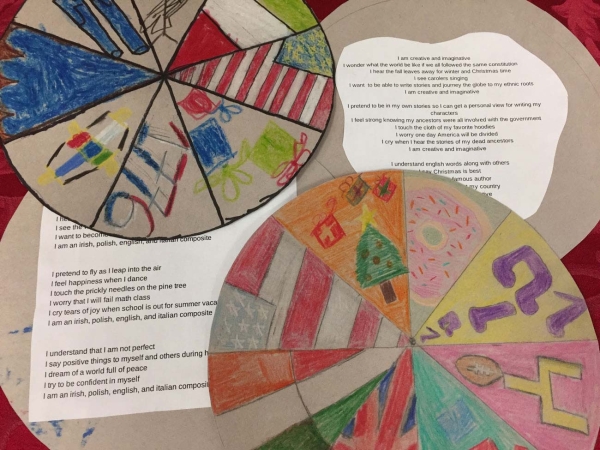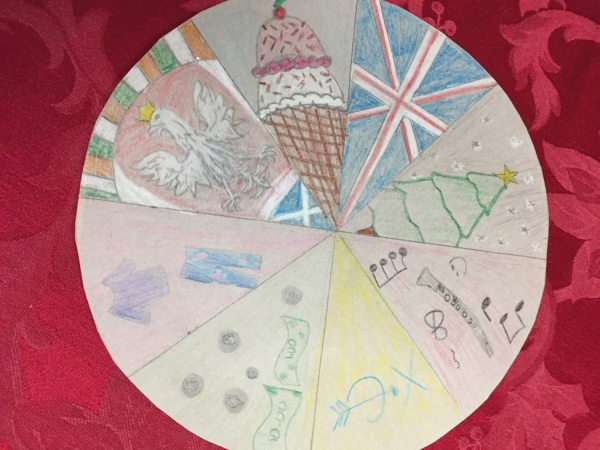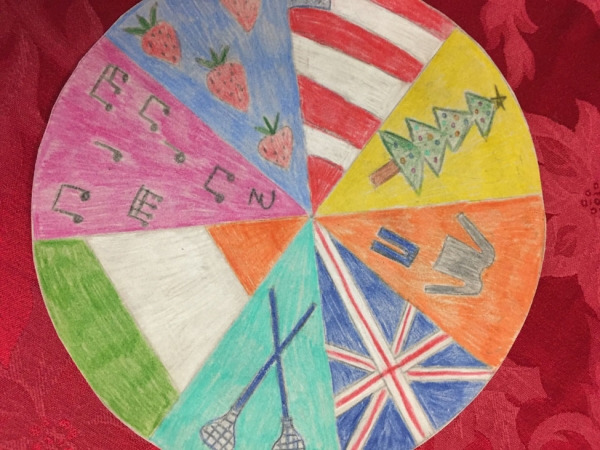Cultural Mandalas
A Lesson About Cultural Identity
By Sandra Makielski, Seventh Grade Geography, Davisville Middle School, North Kingstown, Rhode Island
*Lesson Inspired by Colleen Coleman Baurele
Description
The word mandala means, "a Hindu or Buddhist graphic symbol of the universe" ("Mandala." Merriam-Webster.com. Merriam-Webster, n.d. Web. 15 Jan. 2018.). This symbol is often used to represent wholeness and can be seen in our daily lives as represented by the moon, the sun, and the Earth. Our lives are shaped by our birth culture. The creation of this mandala will model the 8 attributes of culture as represented in symbols of the artist.
Subject
Social studies, language arts, math, visual arts
Time Required
This activity can be completed in 3 class periods.
Materials
- Paper (9" x 12"), Compass or plate to trace, "I Am" poem format
- Artifacts that represent the American culture
- Mandala Scoring Sheet
- "I Am" Rubric
Objectives
Students will:
- Identify the 8 attributes of culture by brainstorming examples from their national culture (American culture)
- Illustrate their birth culture and reinforce their understanding of the 8 attributes of culture through the use of symbols by creating a mandala
- Make connections and share personal information through the creation of an "I Am" poem
Assessment
- Rubrics
- Presentations
Procedure
Part One: Formative Tasks
To introduce or review the 8 attributes of culture (language, clothing, food, government/history, ethnic background, religion/celebrations, leisure activities, art/music/drama/dance), invite students to bring in artifacts/pictures that represent the American culture. As a class, determine which attribute of culture is represented by each artifact. Discuss how these shared artifacts help to define the American culture and how these characteristics help to unite us as one shared culture. In addition to the shared American cultural attributes, we are comprised of unique characteristics that help to make us who we are and many of the attributes come from our birth culture.
Part Two: Action Project
- To make the mandalas, use a compass or tracing pattern to create a 9 inch circle on the paper. Divide the circle into 8 equal "pie" wedges. Each wedge is used to represent one attribute of culture.
- Using symbols (no letters, no words) draw images that represent YOU and the 8 different attributes of culture.
- Use lots of color and all images should be created by YOU. This means the images should be hand-drawn.
- The written component of this project will be a very personal poem that will help to explain your cultural mandala. At least 8 of the lines of the poem should directly connect to your mandala and the 8 attributes of culture.
- Attach the poem to the back of the mandala.
- Share in small groups or as a large group.
Extension
Take this project global by partnering with a school in a different country. Have them complete the same project and then trade. Students will quickly discover the many similarities that exist in our global community.
